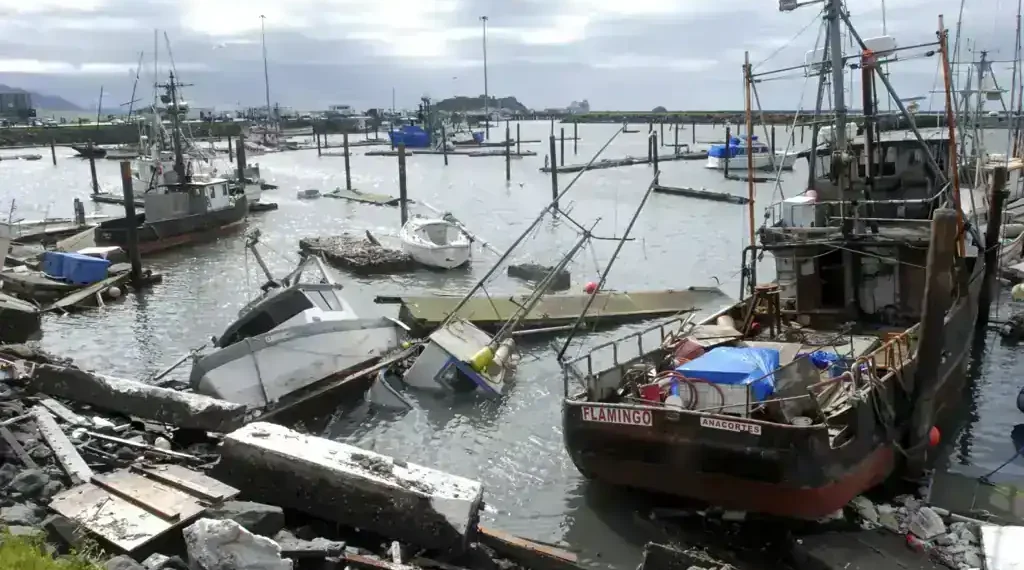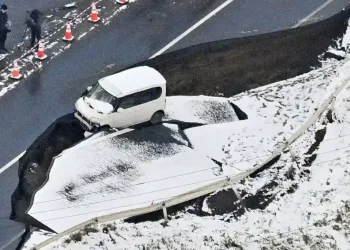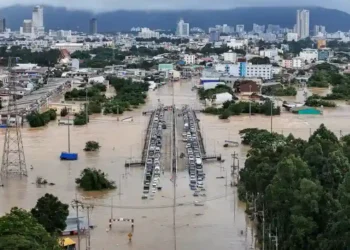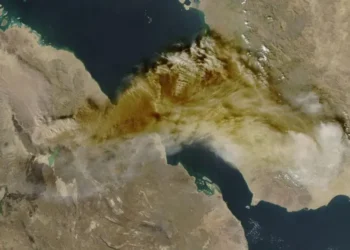Crescent City Sees 4-Foot Tsunami Waves After Russian Earthquake, Avoids Major Damage
Written: July 31, 2025 – 18:00 (U.S. Pacific Time)
A powerful earthquake off Russia’s eastern coast triggered tsunami waves across the Pacific, reaching as high as 4 feet in Crescent City, California—the tallest waves recorded in the continental U.S. from this event. Despite the town’s long and deadly history with tsunamis, no injuries or major flooding were reported.
Small Coastal City with a Long Tsunami History
Crescent City, located near the Oregon border, is no stranger to tsunamis. With a population of around 6,600, the town has experienced at least 41 tsunami events since 1933, according to local records. Its unique geography—particularly the Mendocino Fracture Zone just offshore—funnels and amplifies tsunami energy, making it one of the most vulnerable communities along the West Coast.
The waves that struck on Wednesday were triggered by a massive 8.8-magnitude earthquake off Russia’s Far East. While tsunami warnings were issued for several areas around the Pacific Rim, Crescent City ultimately recorded the highest wave activity on the U.S. mainland—peaking at 4 feet (1.22 meters), according to the National Weather Service.
Although smaller than past surges, such as the deadly 21-foot wave in 1964, the event once again put the city’s preparedness systems to the test.
“A lot of people who aren’t from here did evacuate. But they ended up coming right back because nothing happened,” said Rose Renee, an employee at Oceanfront Lodge, which overlooks the iconic Battery Point Lighthouse.
Harbor Damage, But No Injuries Reported
One of the few structures impacted was a dock at Crescent City Harbor. According to Harbormaster Mike Rademaker, a surge of water dislodged the dock from its pilings around 2:40 a.m., eventually submerging it. Fortunately, the dock was built to absorb wave energy and protect the inner harbor, and it appears to have functioned as designed.
Despite the damage, downtown businesses reopened by mid-morning, and no injuries or residential flooding were reported. However, officials urged continued caution.
“There are still strong tidal currents and fluctuations,” said City Manager Eric Weir. “It’s not yet safe to return to the beach.”
Weir warned that people often underestimate the dangers of tsunamis during seemingly calm conditions and noted that past incidents have led to fatalities simply because someone was in the wrong place at the wrong time.
The 1964 Tsunami: A Lasting Legacy
The 1964 tsunami remains the most catastrophic in Crescent City’s history. Triggered by a 9.2-magnitude earthquake in Alaska, the wave that struck the city killed 11 people, destroyed 29 blocks, and left lasting scars.
According to the National Oceanic and Atmospheric Administration (NOAA), the combined death toll from the earthquake and tsunami reached 124 people: 106 in Alaska, 13 in California, and 5 in Oregon.
Today, Crescent City memorializes this tragedy with a walking tour through downtown, showcasing high-water marks, artifacts swept inland, and monuments honoring the victims.
Another notable event occurred in March 2011, when a tsunami generated by Japan’s devastating earthquake killed one person in Crescent City and heavily damaged the harbor.
A Culture of Preparedness
Over the decades, Crescent City has developed a proactive tsunami readiness program. According to Max Blair, a volunteer at the Del Norte Historical Society, the town conducts annual tsunami drills, maintains emergency sirens, and issues alerts through cellphone networks and local KCRE radio.
“We evacuate if it’s forecast to be a big wave,” Blair said. “But the first wave came in at low tide and it was only a couple feet, so we just stayed away from the beach.”
In the event of a larger tsunami threat, residents are directed to higher ground, usually a Walmart parking lot located about 2 miles (3.22 kilometers) inland.
The city’s official website underscores the urgency of fast response: in the case of a near-shore earthquake, residents may have only minutes to evacuate before waves arrive. The majority of downtown lies within the tsunami run-up zone, placing it at significant risk.
Scientists: Tsunami Risk Still Present
Meteorologist James White from the National Weather Service in Eureka said the Crescent City coast experienced the strongest tidal movements on the U.S. mainland from Wednesday’s event.
Although wave activity began to diminish by late morning, city officials warned that rip currents and unstable tidal conditions would persist through the day.
“We urge everyone to stay out of the water until we give the all-clear,” Weir reiterated.
Conclusion
Crescent City’s experience underscores the importance of coastal preparedness, especially for communities with long-standing vulnerability to tsunamis. While this week’s event caused minimal damage, it served as a powerful reminder that the city’s risk is ongoing—and readiness can mean the difference between life and death.
Residents and visitors alike are urged to follow official guidance, stay alert during seismic activity, and avoid beach areas during advisory periods.
This article was rewritten by JournosNews.com based on verified reporting from trusted sources. The content has been independently reviewed, fact-checked, and edited for accuracy, neutrality, tone, and global readability in accordance with Google News and AdSense standards.
All opinions, quotes, or statements from contributors, experts, or sourced organizations do not necessarily reflect the views of JournosNews.com. JournosNews.com maintains full editorial independence from any external funders, sponsors, or organizations.
Stay informed with JournosNews.com — your trusted source for verified global reporting and in-depth analysis. Follow us on Google News, BlueSky, and X for real-time updates.














